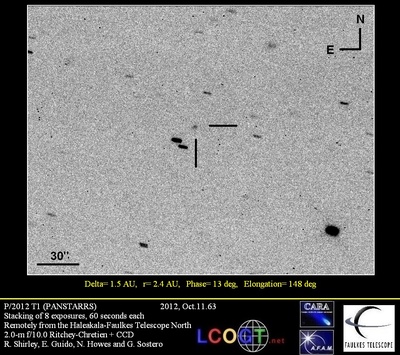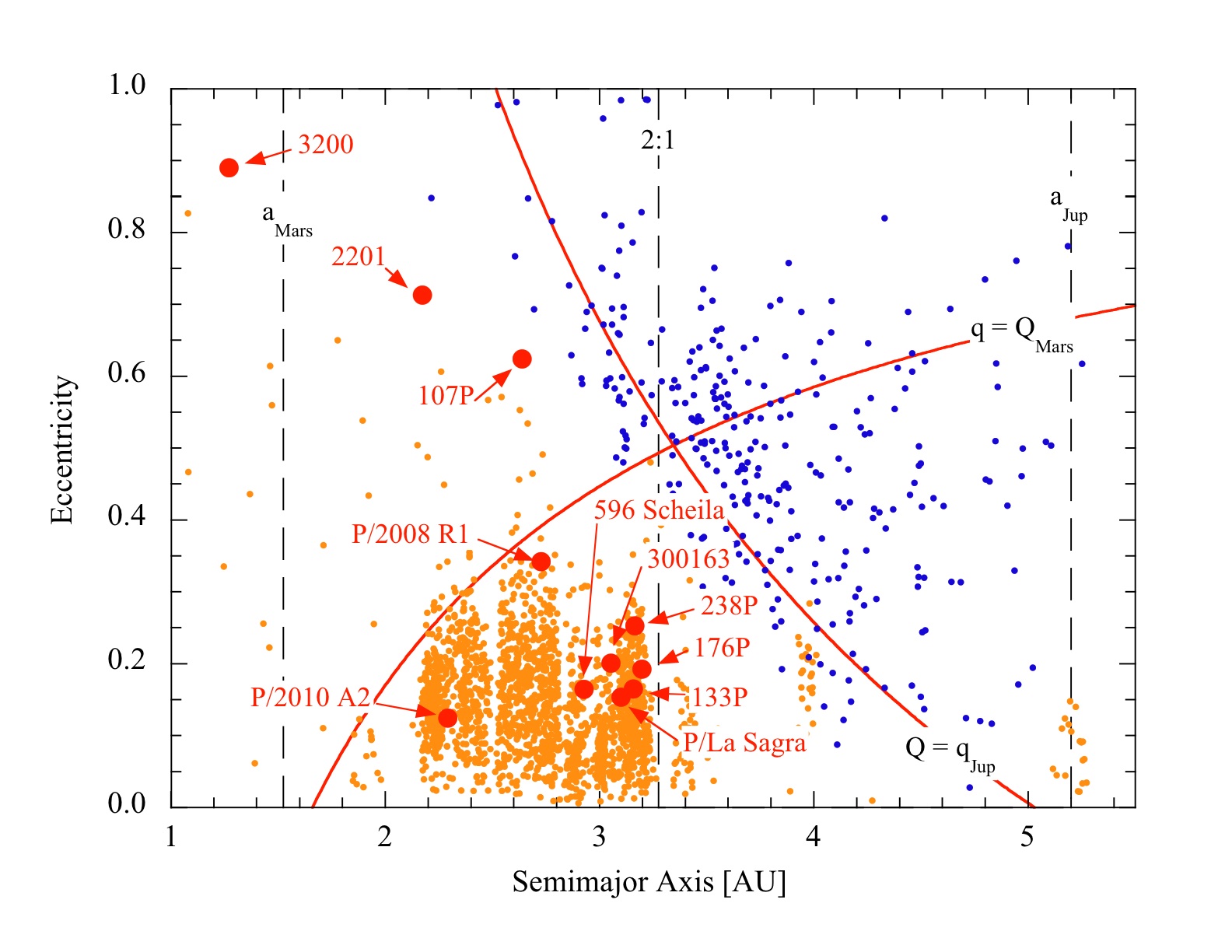New Comet: P/2012 T1 (PANSTARRS)
After posting on the Minor Planet Center's NEOCP webpage, other CCD astrometrists have also commented on the object's cometary appearance. We performed some follow-up measurements of this object on 2012, October 11.63. Stacking of 8 R-filtered exposures, 60-sec each, obtained remotely, from the Haleakala-Faulkes Telescope North through a 2.0-m f/10.0 Ritchey-Chretien + CCD, shows that this object is a comet with a faint coma nearly 5" in diameter.
M.P.E.C. 2012-T55 assigns the following elliptical orbital elements to comet P/2012 T1: T 2012 Nov. 21.89; e= 0.20; Peri. = 323.21; q = 2.41 AU; Incl.= 11.4. According to his orbital characteristics of asteroids (with a Tisserand parameter T_jup = 3.176 ) and the physical characteristics of comets this object seems to be a new member of Main Belt Comets (MBCs). (see also our previous post about 596 Scheila)
Below is shown the distribution of the mass-losing asteroids, including their relation to the asteroids (orange dots) and classical comets (blue dots). In this graph the position of newly discovered P/2012 T1 (PANSTARRS) is just nearby 300163 (2006 VW139). Click on the image for a bigger version.
by Ernesto Guido, Robert Shirley, Nick Howes & Giovanni Sostero

